I like to think of a Violin Practice Journal as less of a physical thing, and more as an approach to keeping a record of your practice.
However you choose to keep your journal - notebook, app, word document... or my favourite, old scraps of paper stored in a cardboard box! ...
... what's important is that you have some sort of records of your practice. What you did, in other words.
And, more importantly, why.
A practice journal is all about documenting what you've done in the past. But why would you want to do that?
Journalling shows you - in full, inescapable detail - exactly how you've spent your time.
Now, as they say... past performance doesn't necessarily indicate future performance.
But what it does do for you, the violinist, the journaler, is to show you clearly what you did, and why.
Once you know that, and have time to reflect on it, then you can plan ahead to what you're going to do in your next practice session... ... and why!
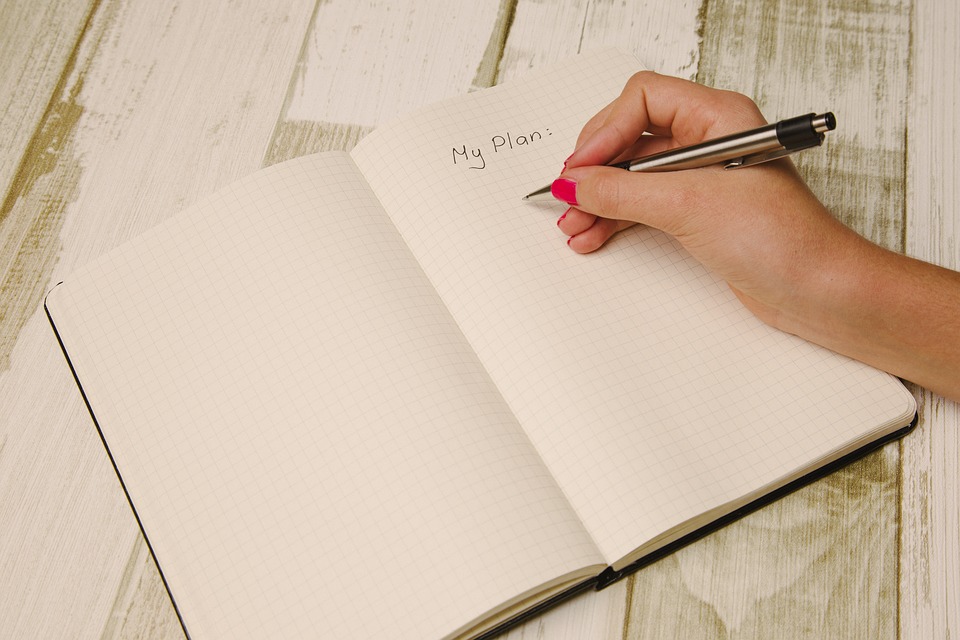
Keeping a practice journal can have a number of benefits.
Some are very practical, some are more emotional and motivational. But all of them lead you towards better, more efficient practice.
Here's an overview of some of the things you can expect to see when you begin to keep a practice journal...
Time is one of THE most precious - and finite - resources that we, as human beings, have.
As musicians, we need more time than most to hone our craft, and put in the practice hours that will make our playing as good as we want it to be.
So we must make sure we're using every second wisely!
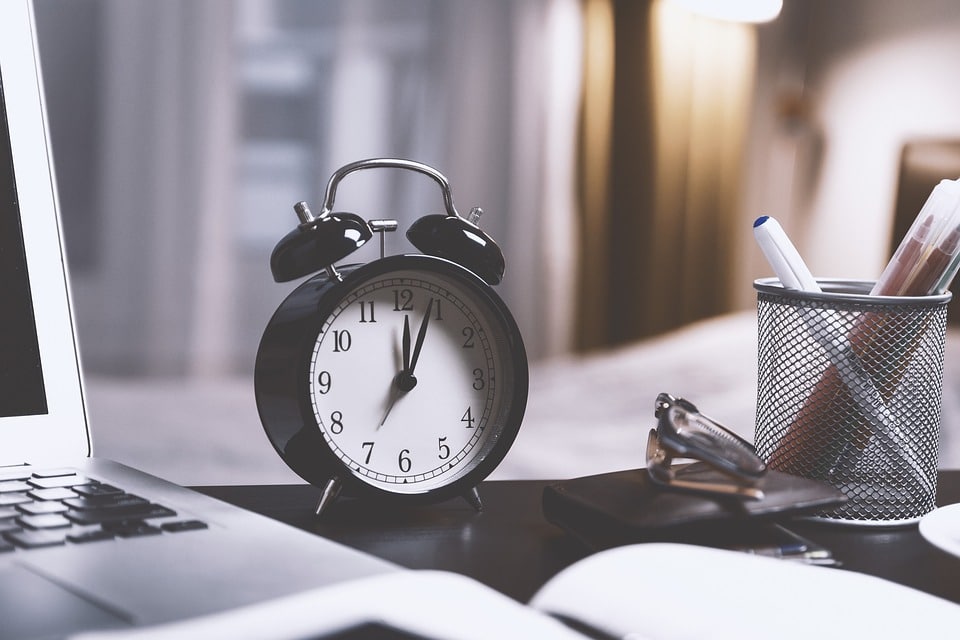
If your schedule leaves you with limited time for violin practice, you can keep your momentum going by restricting the number of minutes you spend on each task.
This way you'll get through more tasks, and cover more ground in your practice. Your development will be more balanced, because you're making progress in all areas, rather than just one or two.
Over time, as you review your journal, you'll start to notice improvements across the whole of your playing. This will create a virtuous circle, as you'll be motivated to practise even more!
"What did I ACTUALLY do?"
If you want to be sure about how you're using your time, journaling is an excellent tool. From your notes, you can see exactly where your time has gone!
If you've used your practice time effectively, you'll see it right there on the page! And if you haven't, you'll see it there too!
Of course we all have days where practice just isn't flowing. That's fine. Note it down in the practice journal, go and have a biscuit, sit by a river and mediate, try again tomorrow.
But at least we know how we've spent our time, and we know that we were clear and deliberate about our decisions.
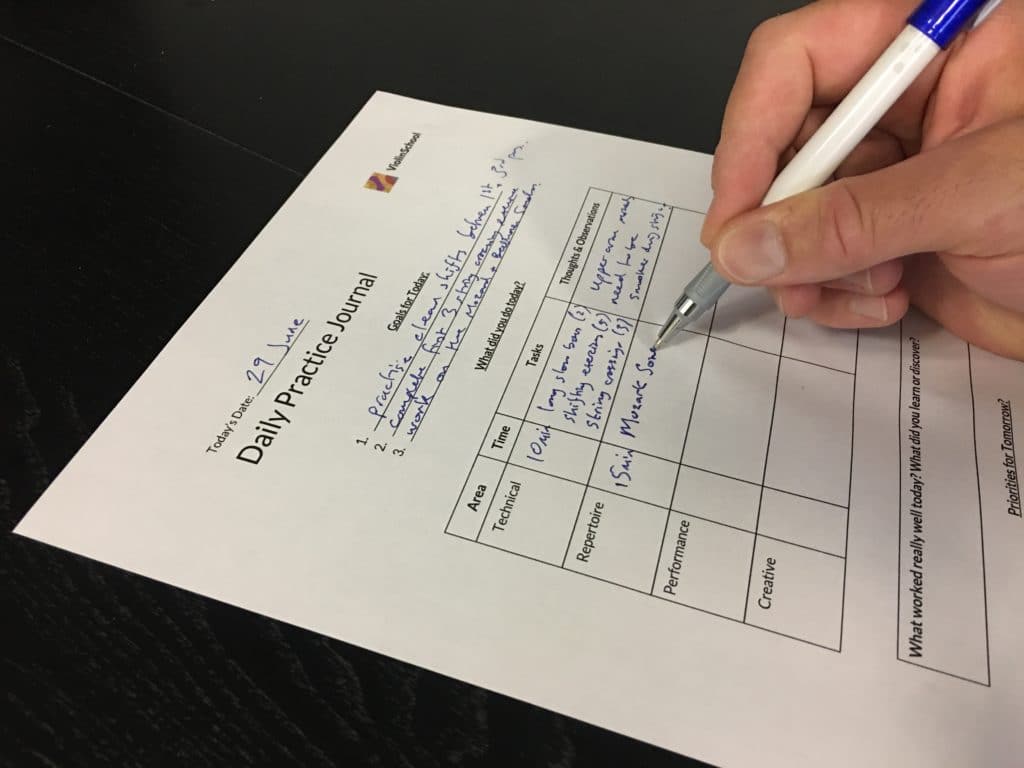
Keeping a journal each time you practise doesn't need to take long - a minute or two is more than enough. But the simple act of journalling every time you practise can work wonders for building your regular habits.
A written record of your daily practice creates an extra incentive to keep taking daily action. Comedian Jerry Seinfeld famously suggested to record an unbroken chain of daily work on a big wall calendar. It can be extremely satisfying to see every day's practice checked off on the calendar!
The opposite is also true; once you get into the habit of keeping a daily record of your practice, it will feel wrong to 'break the chain' by missing a day. You'll be excited and motivated by your progress, and you'll want to keep it going for as long as possible.
These little daily habits are the foundation of achieving your long term goals. You won't necessarily see progress every single day, but the cumulative effect of daily practice over a long period can be extraordinary.
Use your journal to keep yourself accountable on a daily basis, and get yourself into a really good 'daily habit' of violin practice!
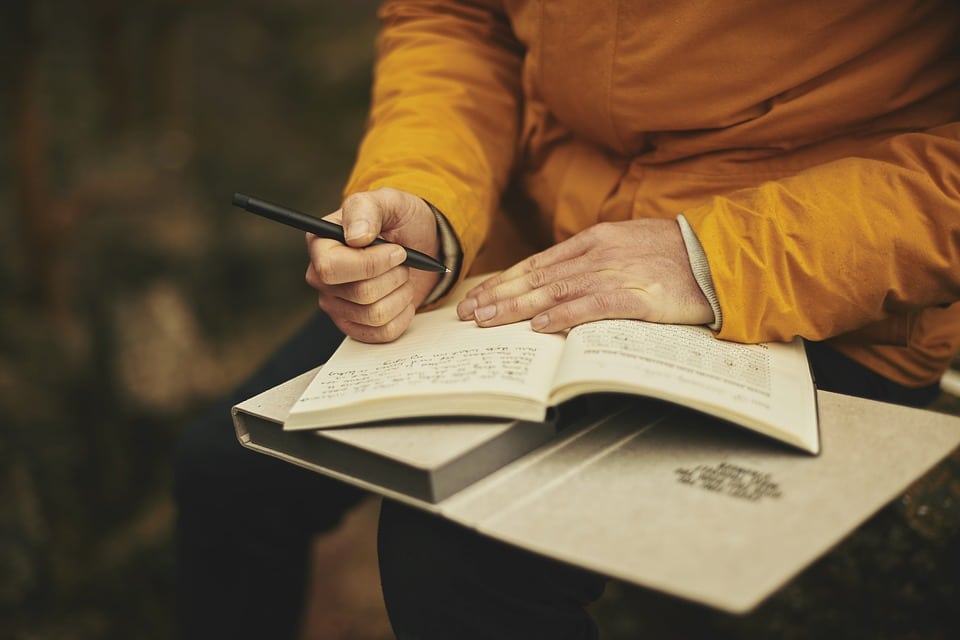
After a detailed piece of practice on something, our subconscious mind gets to work on it - especially whilst we're sleeping.
That's why sometimes you can wake up in the morning, and suddenly have a magical clarity about an issue you were struggling with the previous day. Or, you get to the practice room and find that you can do something that you couldn't do the day before!
However, if you haven't taken clear notes and already set out your priorities for the next day, you might forget the work you did yesterday... you might not even remember to try out the tricky passage you were working on!
But if you DO keep notes, then you can go straight back to yesterday's challenges, and apply whatever amazing solutions your brain has come up with during the night!

There's an old saying, "what gets measured gets done". It's worth tracking how much time you spend on each task, so that you know you've covered everything adequately.
When you can see exactly which practice tasks helped you to make tangible, measurable improvements, it gives you a much clearer idea about what's working and what isn't.
This makes it easier to decide what to spend your time on next!
When you look at your recent journal entries before planning the next day's tasks, your record of what you did (and for how long), will give you a sense of what you need to do to achieve the next short term goals.
Make a note of what worked, and how long you had to practise it before seeing results. From there, you can start to predict efficient ways of overcoming the next challenges on your list, and building them into your practice plan!
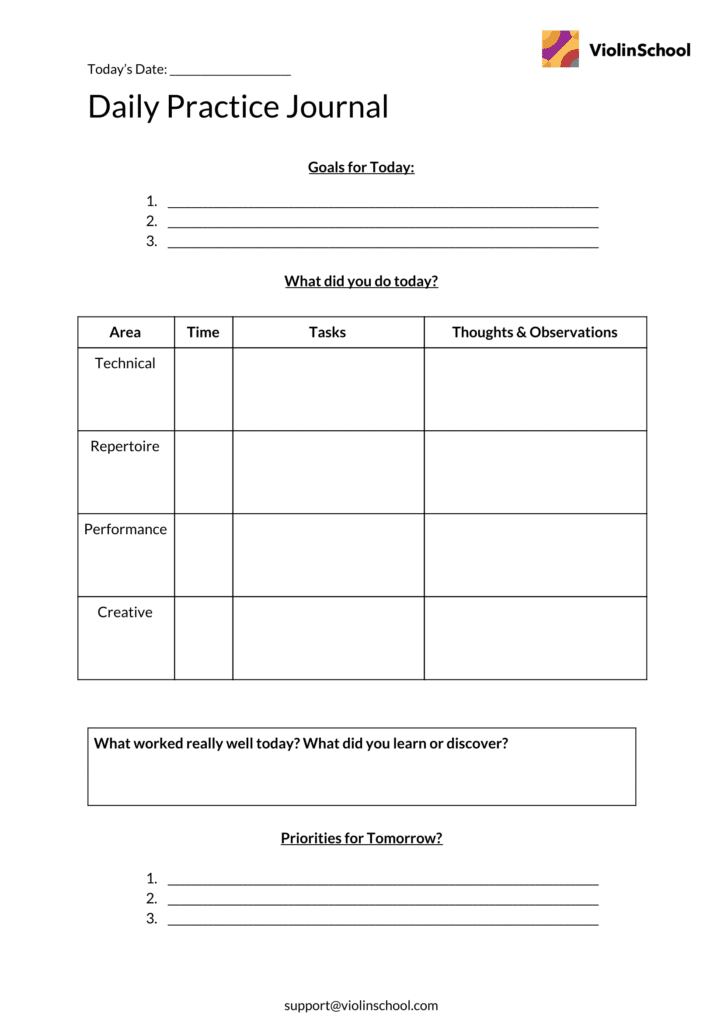
ViolinSchool members can download the Practice Journal templates in the ViolinSchool Library
Too many people practise in an 'ad hoc' way, without a clear sense of what they're trying to achieve.
It helps if you have a clear goal or objective that you're working towards, such as a concert or exam, but what if you don't?
This is where having a clear framework or structure for your practice can give you immense clarity about how and why you are practising.
Even if you don't have a short term goal to work towards, you can still plan your practice time wisely.
At ViolinSchool, in the absence of any alternative plan, we like to break up practice time into four key areas:
TECHNICAL, MUSICAL (Repertoire), PERFORMANCE and CREATIVE.
Here's a useful 'practice menu' that explains a bit more about each of these key areas. We find this is a helpful framework of thinking about the different sections of your violin practice, so that you don't overlook anything when planning your daily practice!
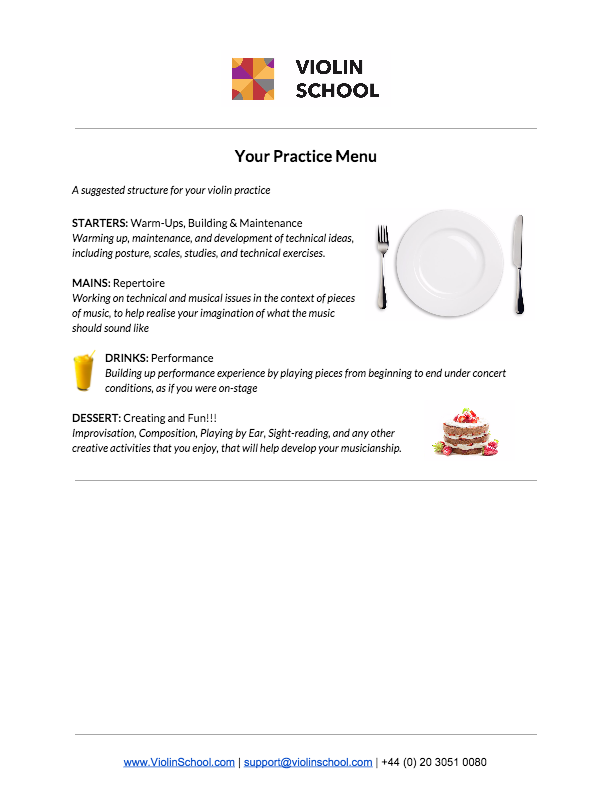
ViolinSchool members can download all of our Practice Tools in the ViolinSchool Library
Journalling can help you understand how balanced your practice is. For example, are you spending all your time just playing through pieces? Or spending so much time on technical work that you're not doing any creative, fun stuff?
Of course, people need a different balance to their practice at different stages of learning, so the structure of everyone's violin practice will be different.
But by keeping a note of which TYPES of practice task you do, and for how long, you can keep assessing whether or not your violin practice is balanced, and whether you're focused on the most important tasks... the ones that are most important for YOU, right NOW!
Another really valuable insight you'll gain from keeping a regular practice journal is that you'll start to notice patterns in your practice. This can be positive OR negative!
Ask yourself: What do you see popping up regularly in your journals? Are you always practising the same exercises? Are you seeing the same challenges coming up repeatedly? Do these patterns suggest a technical problem, or some other issue where you need to seek help from a teacher?
Of course, some repetition is good. If you're starting most of your practice sessions with long slow bows or other similar sound production exercises, that's probably a good thing.
And scale routines, for example, are useful for maintaining the fluency of your left hand technique, so it's good to see a regular pattern of scale practice in your journal.
However, if you find that you're often playing the same study or technical exercise over and over again for weeks at a time, then you might be at risk of your practice habits becoming stale (and boring!).
Unnecessary and repetitive tasks are a warning sign... once the creativity disappears from your violin practice, the fun will often disappear too, and practising can become a chore. Don't let that happen!!
Use your judgment - ask yourself if recurring patterns in your practice journal show good habits, or whether you need to mix things up a bit and look for new ideas.
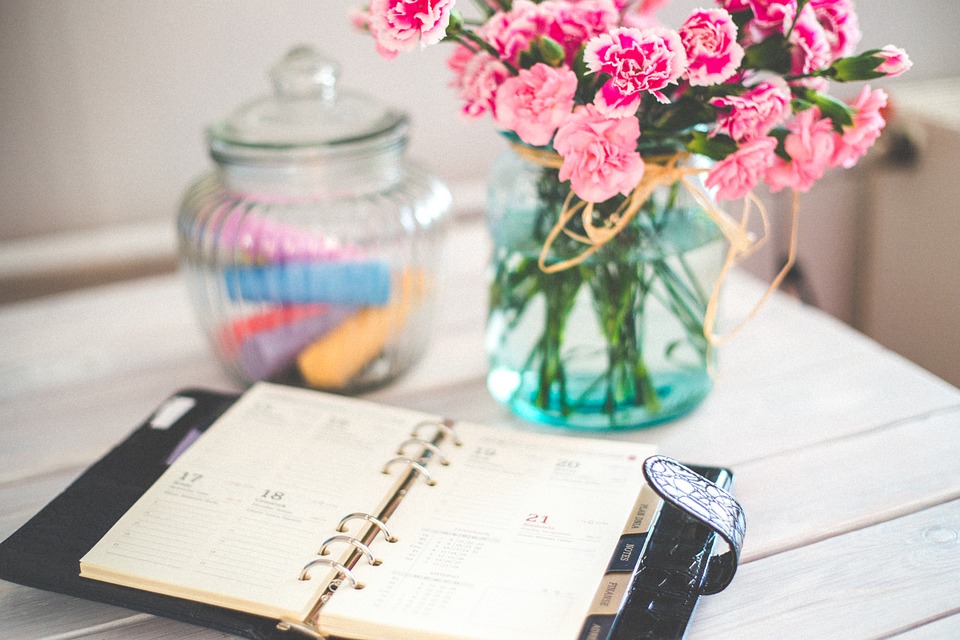
Learning the violin well takes a long time, so your goals and priorities are likely to change over the years.
What you're aiming for one month might be totally different a year or two later.
If your approach to violin practice doesn't evolve to support your changing goals and priorities, then you'll hit problems.
And your practice journal provides a great way to monitor - and prevent! - this.
By regularly reassessing your short term goals, you can assess whether you're moving in the right direction for achieving your long term goals.
That's why we encourage you to make a note of everything you've learnt or discovered in your practice journal, as well as using short term goals to clearly map out what you want to achieve in your practice... BEFORE you do it!
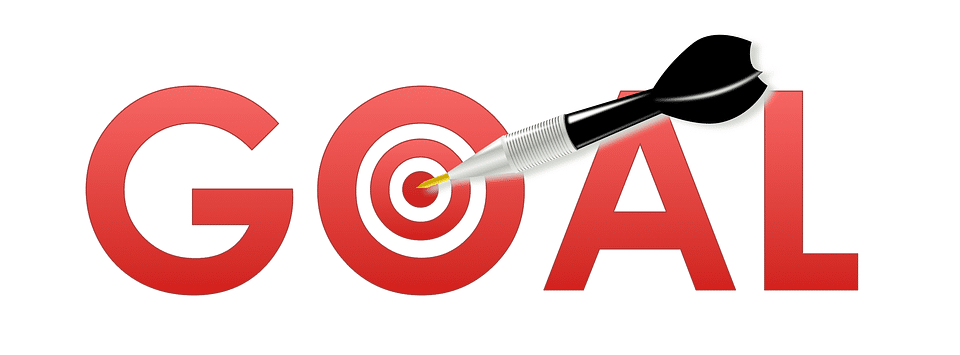
Don't get too lost in the detail though. If you're so focused on your short term practice that you never reflect on your long term plans, it's easy to lose focus and momentum.
Every few months, take some time to review your practice journal AWAY from the violin.
Take it to a quiet place where you're not going to be disturbed, and give yourself some time to read and think.
As you reflect on what you've done over the past months, you'll get a feeling for how you're progressing according to your 'big picture' plans.
Your learning and your new discoveries might even send you in a different direction! Perhaps you'll discover a new style of music that you love ... Or suddenly you'll become interested in a different type of ensemble music!
Embrace these changes, and update your approach to practice so that it's congruent with what you want to achieve long term.
Being able to 'zoom' in and out of your short, medium and long term activities is wonderfully helpful for giving you clarity and confidence in how you're spending your time.
Looking back through your journal allows you to see how your day to day practice has fitted into the big picture of what you want to achieve.
Reflect on what worked well and what didn't work well. Use your observations to model what you want to do - or not do - in your future violin practice!

Finally, never underestimate the power of motivation.
When you see, from your practice journal, that you're making tangible, clear progress, then you're far more likely to feel enthusiastic and motivated about the journey ahead!
The simple act of looking back through your practice journal and seeing what you've achieved, can be extremely empowering. A small breakthrough or new discovery can fuel your excitement, and keep you looking forward excitedly to your violin practice time!

Unless your home is patrolled by rambunctious pets or wild children, a great way to reduce the 'barrier' to practice is to leave your instrument out of its case, so that it's easily accessible ...
... You're far more likely to pick it up and start to play if you don't have to go through the hassle of getting it out of the case!
Do the same with your practice journal ... leave it near your instrument so that you always remember to fill it in. But also, leave it somewhere accessible during the day so that you can refer to it and reflect on your current work whenever you have a spare moment!
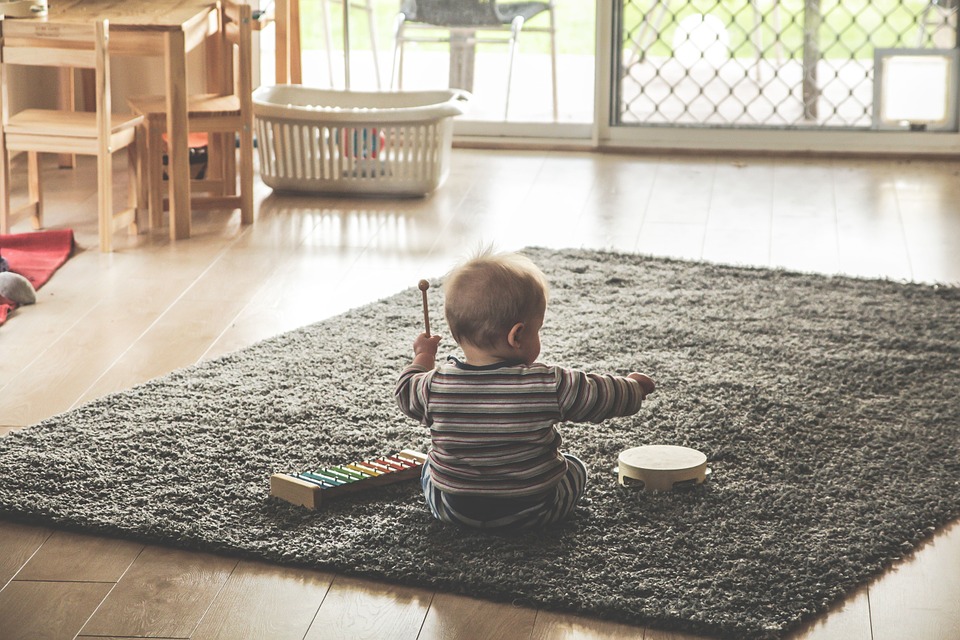
Once you've got into the habit of journaling regularly, you can then think about how to improve the process.
If you're able to keep a digital journal, then all sorts of opportunities open up for tagging, categorising, and sorting your notes. Software such as Evernote, Dropbox, or even just a folder of Word documents can be a great way to sort your ideas in an accessible, easily-navigable way.
For some people, this is way too much hassle. But for others, the convenience of a digital device - and the possibility for organising your notes in a creative way - can really help to make learning and practice more efficient.
Just... don't forget to back it up!
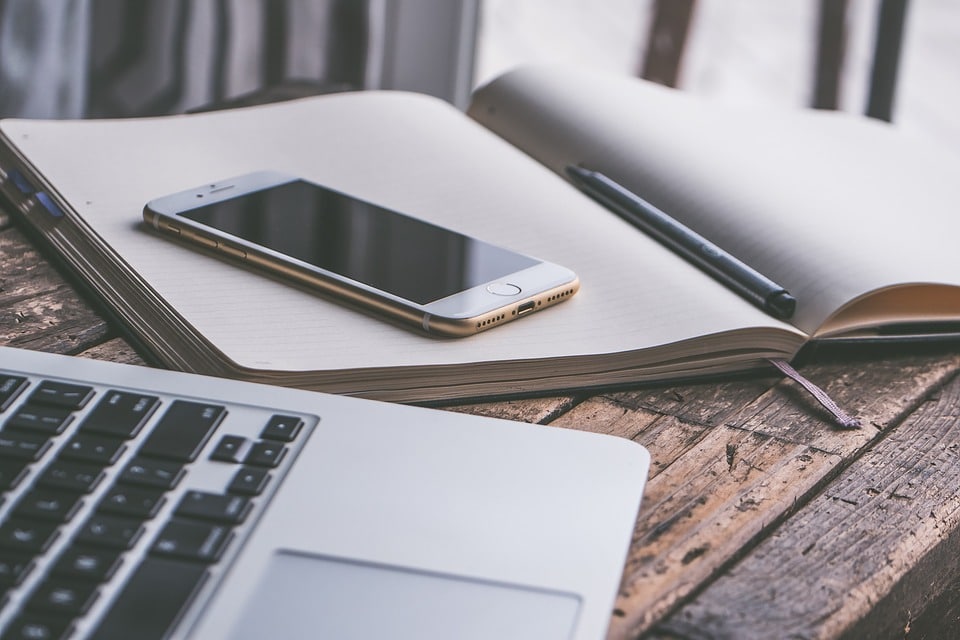
If daily journaling doesn't work for you, or you're not yet convinced that it's a necessary thing to do, that's fine... but you can still keep a basic record of what you've done!
Instead of a daily, time-based journal, some people like to keep a page of notes for each piece of music they work on.
You could keep all your notes for violin sonatas in one box, and for violin concertos in another ...
... or maybe you have a folder dedicated to studies and technical exercises...
... or even just use a scale tracker to track which scales you've practised, and how often!
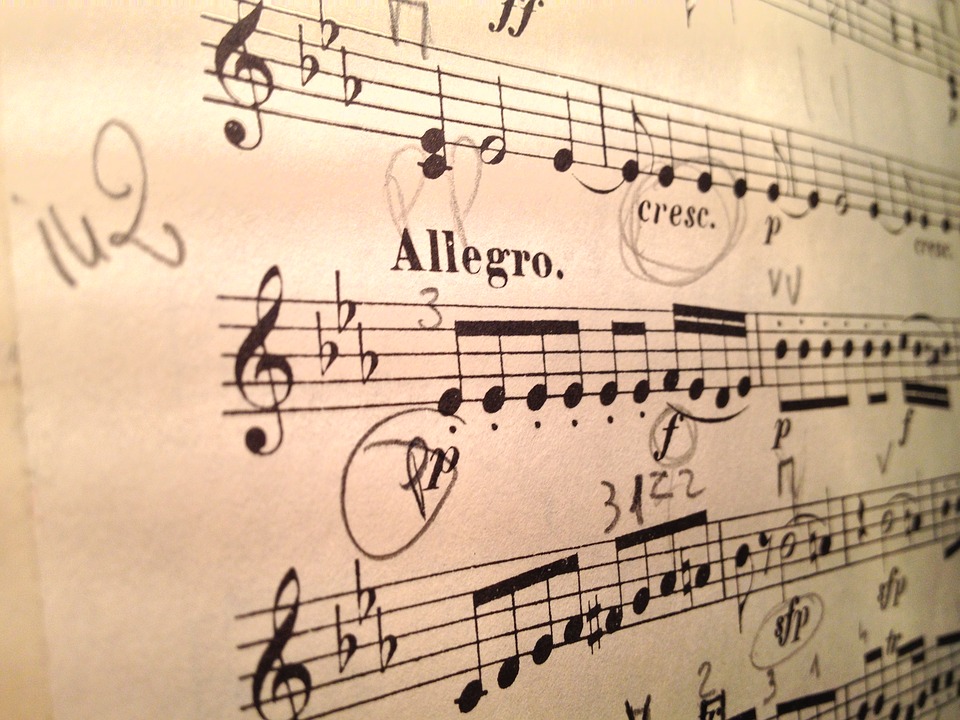
Journaling and note keeping can take MANY forms, and it's very important to remember that what works for one person won't necessarily work for another.
Personally, I don't like spending much time on detailed note-keeping about what I've done. I prefer scribbling a quick note to myself, committing it to memory, and dumping it in one of my many cardboard boxes!
Knowing it's there (and knowing roughly which box it's in) is all the peace of mind I need, and if I want to look back on what I've done, I'll just sift through the boxes and explore my past practice sessions.
But plenty of people would hate the way I keep my journal... I know many of our learners carefully type their notes, or keep records of each practice session in a beautiful hand-written notebook!
Ultimately, so long as you're keeping a good record, it doesn't really matter HOW you do it. Your journal just has to be right for you.
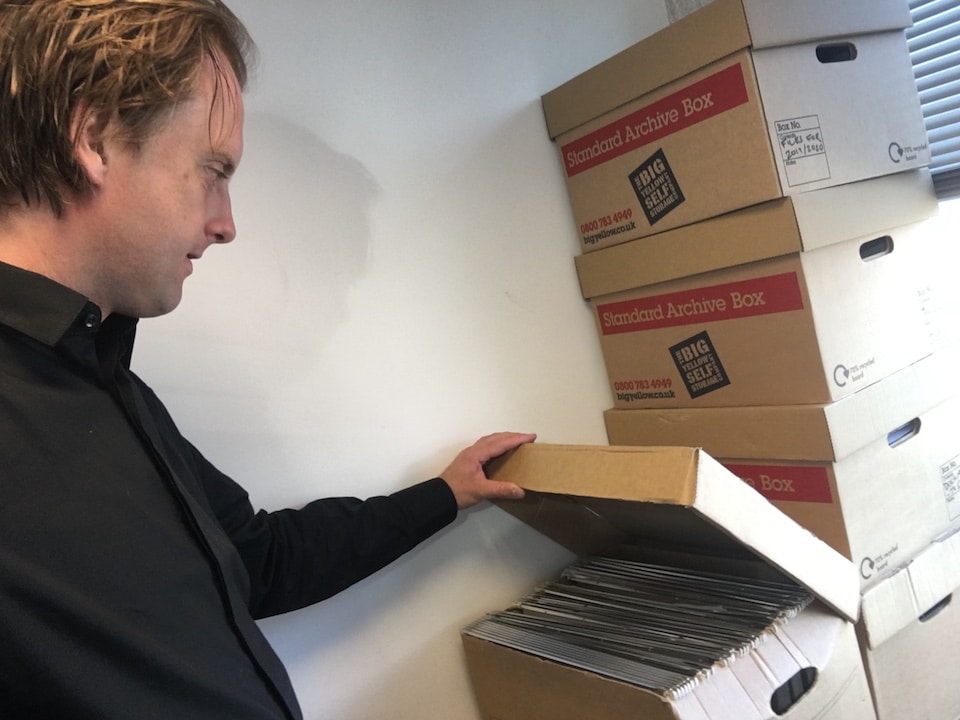
Anne Timberlake: Transform Your Practice: Keeping a Practice Journal
Rob Knopper - What My Practice Journal Looks Like
Real School of Music: How to Use a Practice Journal
"what gets measured gets done" - Unknown
'Big Circles' are simple, straightforward exercises that you can use as a warm up at the beginning of your practice. They're also useful for improving your bow control, and your feeling for the 'balance' of the bow.
Before we get started playing Big Circles, we need to be clear about how the balance of the bow works.
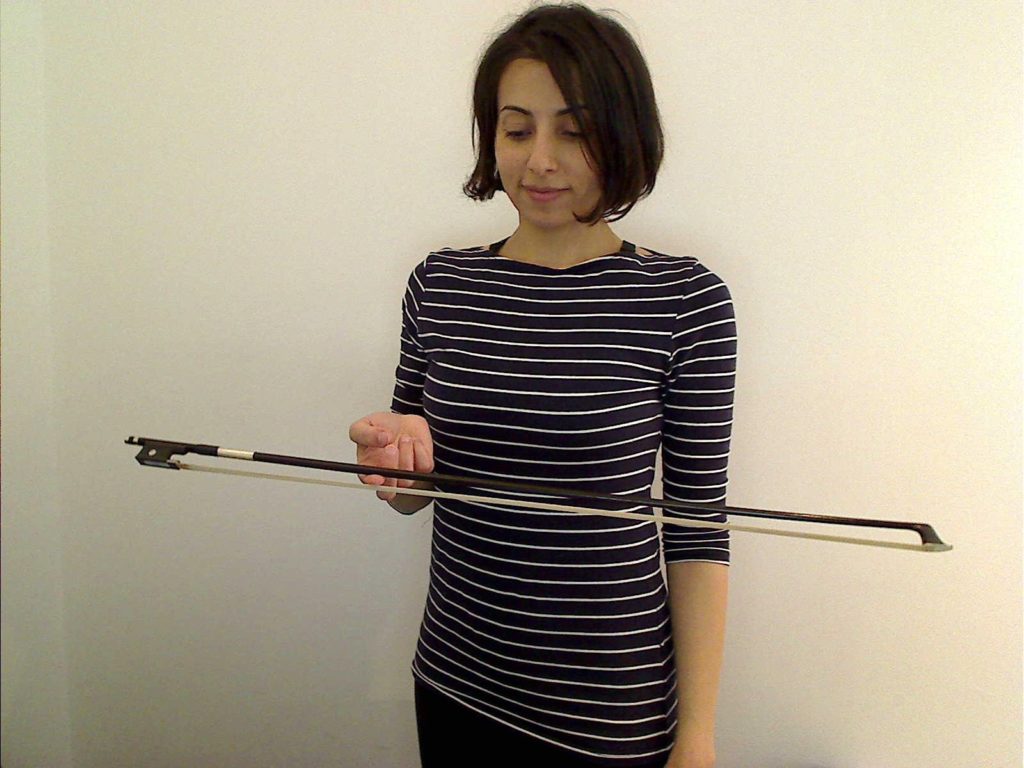
Depending on where we play in the bow, the balance of the bow changes. This is because at any given moment, there is more of the bow - and therefore more bow weight - on one side of the strings than the other.This is why we have to have a flexible bowhold that is constantly rebalancing the weight of the bow, by acting as a suspension system. If instead we have a 'fixed' bowhold that quite literally 'holds' the bow, then we can't rebalance the bow properly, and we end up with a hard, inflexible sound!
One of the areas where we need to 'balance the bow' the most, is at the very heel of the bow (the bottom end, where the bow hair connects into the 'nut' or 'frog' of the bow). When we are playing at the heel, the bow is very unbalanced, because most of the bow weight falls to the left of the strings (as you look at it whilst playing).
This is why it's hard to control our bow strokes in the lowest quarter of the bow.
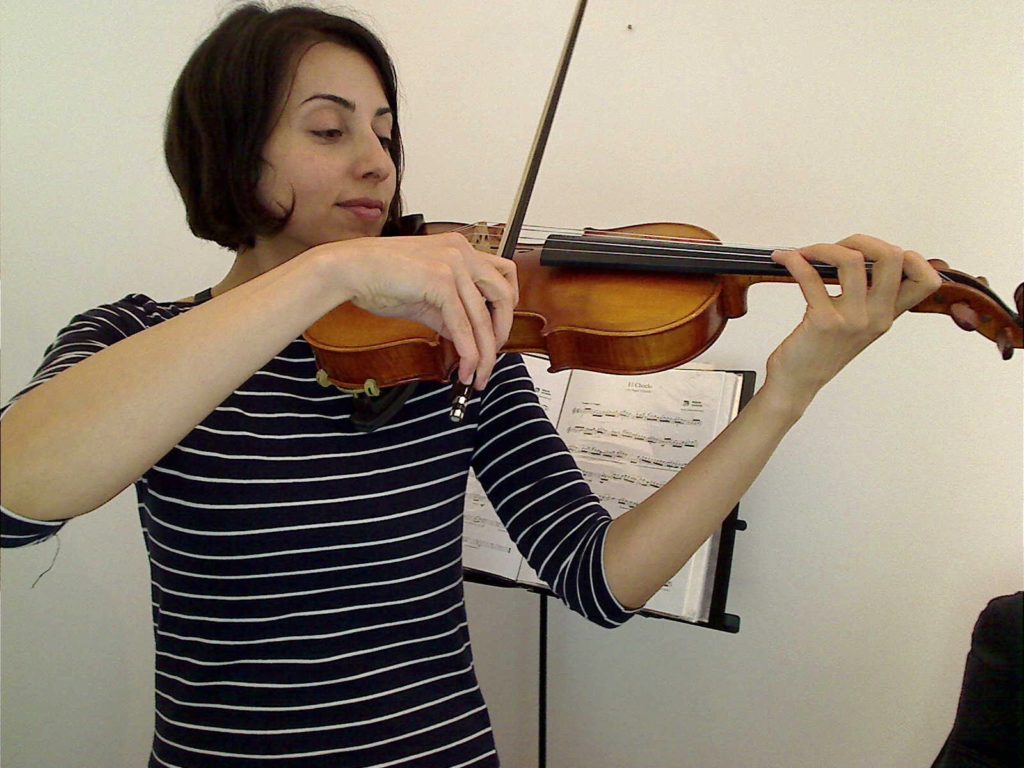
To stop the bow falling in the wrong direction, we use the little finger as a counterweight. When the little finger is sitting on top of the bow, and its knuckle is engaged as a counterweight, it stops the bow falling uncontrollably.This provides stability to the bowing movements, and allows us to bow smoothly at the heel.
Big Circles: Relying on the Little Finger
The Big Circles exercise relies on the little finger operating correctly. If the little finger isn't acting as a counterweight, then the exercise won't work!
So the first step is to check that your bow hold is correct.
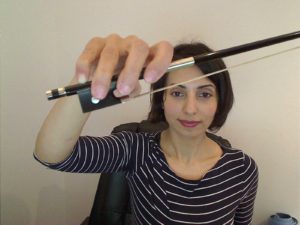
Use our Checklists to be sure that you've checked each part of your posture and your bowing arm technique, before you begin!
Raise your bowing arm into the air. Make sure that your little finger is already working as a counterweight, keeping the bow steady as you move.
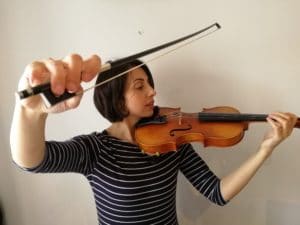
Breathe out, and relax your body as much as you can without collapsing your posture. As you breathe out, lower the bow downwards towards the string (start with the D or the A string first). Focus in on your little finger, and feel how it continues to support the weight of the bow.
Allow the bow to touch the string very gently, but stay focused on the little finger counterweight. The little finger should continue being a counterweight until the bow is firmly engaged with the string, and above the level of the balance point (half-way point in terms of weight) of the bow.
Play a down bow all the way until the tip of the bow. Feel how the bow balance changes throughout the stroke, and note how the feeling in your right hand and fingers changes throughout the stroke.At the beginning of the stroke you will be trying to counter the heaviness of the bow weight, and not let it fall too heavily into the string.During the stroke, the bow will become more balanced, and your hand/fingers will not have to 'do' so much.Towards the tip of the bow, you may need to add in more weight into the bow, to create a consistent sound all the way to the end of the stroke.
Repeat the Big Circles several times, and stay focused on:
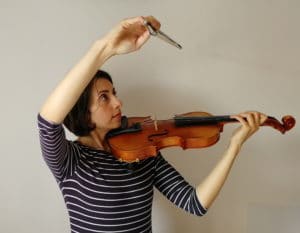
Long Slow Bows are one of the best - and most straightforward! - techniques that you can use to warm up on the violin! They're also great for improving your bow technique.
Practising Long Slow Bows involves playing lots of up and down bows on your violin. But even though the task isn't complicated, there are lots of things you need to look out for ...
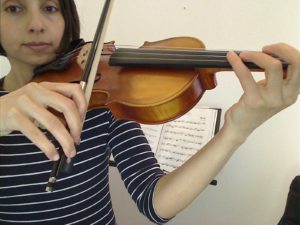
Here are some of the things you should check for when practising Long Slow Bows:
Posture - Is your body correctly positioned? Are all the elements of your body posture, your right arm and your left arm technique in the right place? (If you're not sure, use our '3 Important Checklists' to find out!)
Bow Control - Is the bow doing exactly what you want it to, and nothing else? Or does it have a life of its own? You need to make sure that the speed, weight and placement (position of the bow) are exactly how you want them to be!
Pure, Clean Sound - if you have good bow control, then you can create a beautiful, clear, vibrant and resonant sound. Listen closely to your sound production, and make sure there aren't any 'rough edges' to the sound.
Straight Bows - The bow needs to remain at right angles to the string as you play. This is what we call a 'straight' bow. If it doesn't remain straight, then the connection between the bow hair and the string will be disrupted, which will affect the sound you create.
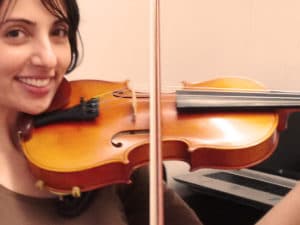
Many people like to take a few minutes to play Long Slow Bows at the beginning of a violin practice session. It's a great way to get warmed up and ready to play - and it can be a useful way of 'clearing the mind' and focusing your awareness on your sound production.
It's a particularly good exercise because it's so simple... there aren't any other complicated techniques or musical demands filling up your brain, so you're free to focus on the sound, and the precision of your core bowing technique!
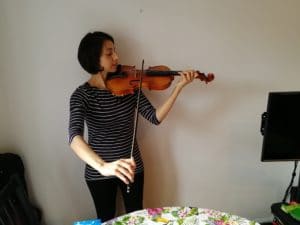
There are a few methods that you can introduce to your Long Slow Bow practice that will increase the effectiveness of what you do.
Play it SLOW! - This is sooooo important! Yes, the clue is in the name... it should be obvious! But it's easy to forget about bow speed after a few strokes, particularly if we're feeling enthusiastic and want to move quickly through our practice tasks.
But you need to stay disciplined and make sure that you take the time to play with a slow bow stroke. It's actually MORE challenging to play with a consistently beautiful sound at a slow tempo than at a fast tempo. So practising slowly is extremely helpful for the development and maintenance of your bowing technique.
Also, when you play slow, you have more TIME to consider the movements that you're making, and the sound that you're producing. This means you can listen in more detail to the resonance of the sound that you're producing, and make adjustments as you go along!
Play it IN TIME - It's one thing to get a technique working fluently, but it's another task altogether to make it work effectively in time with the music.
So once your Long Slow Bows are generating a consistently beautiful sound, you should try increasing the precision of your bow control by adding a regular beat.
A simple way to do this is to set a metronome at 60 beats per minute, and then making each Long Slow Bow last for four beats. That way you're using a quarter of the bow for each beat.
Once you've tried a few strokes like this, you'll feel how important it is to get the bow speed consistent, in order to stay correctly in time with the metronome. This will help to improve your co-ordination and the accuracy of your bowing.
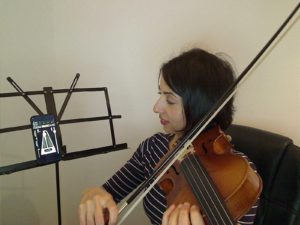
Although it's important to have a good set of practice routines, you should change around your tasks from time to time. You don't want to get 'stuck in a rut' by doing the same things over and over again!
Be creative in your technical practice, especially if you want to develop as much flexibility as possible in your bowing.
There are SO many different ways you can practise Long Slow Bows, and you should feel free to invent different approaches and think of new ways to practise the exercises. Here are a few to get you started:
How's your slurred string crossing technique? We've just added the first video tutorial to course 1D, and it's a smooooth ride for those that string-cross steadily...
Or, if you're still getting to grips with music theory, then Setareh has a 'Quick Fix' for your sixteenth notes (or as we like to call them here in Britain, semiquavers...!), over in the Beginner Quick Start course:
Enjoy!
We've just added some new video lessons for the Beginner level...
Get to know the open strings of the violin, and how it feels and sounds to play on them. Click here to download the sheet music!

Traffic Lights
Ready ... Steady ... Gooooooooooo!!! These fun rhythms will keep you busy while you wait for the green light! Click here to download the sheet music!
Plus, one of our most popular feature articles...
One of our most popular pages on ViolinSchool.com is our article Violin Notes for Beginners. If you need a basic primer on the strings of the violin, it's a great place to start! Click here to read it: Violin Notes for Beginners
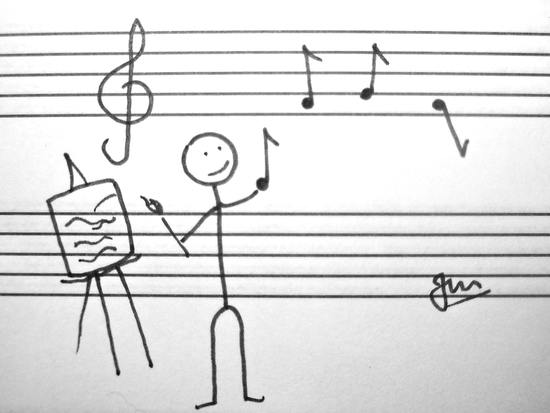
Here's Setareh's most recent video, explaining how to warm up the hands and fingers before starting to play. I've found these exercises a really useful way to begin my own violin practice, and I hope you find them useful too!
Here's an earlier video with similar exercises for posture and breathing. It's soooo important to get your body balanced before you play - everything is easier when your body is flexible and relaxed!
Our New YouTube Channel
Setareh and I are dedicating the next few weeks to filming the latest series of ViolinSchool videos. As well as the online courses, there'll be video tutorials on our YouTube channel as well.
If you're a regular YouTube user, please click below for our new channel then click SUBSCRIBE (make sure you're logged in to YouTube first)! You'll be notified on YouTube whenever we publish new tutorial videos.
Subscribe to ViolinSchool on YouTube!
More videos coming soon! Enjoy 🙂
Cuckoo! An exclusive arrangement for two violins, by David Worswick, of the fabulously filigree piano piece, ͚Le Coucou͛, by French composer, Louis-Claude Daquin.
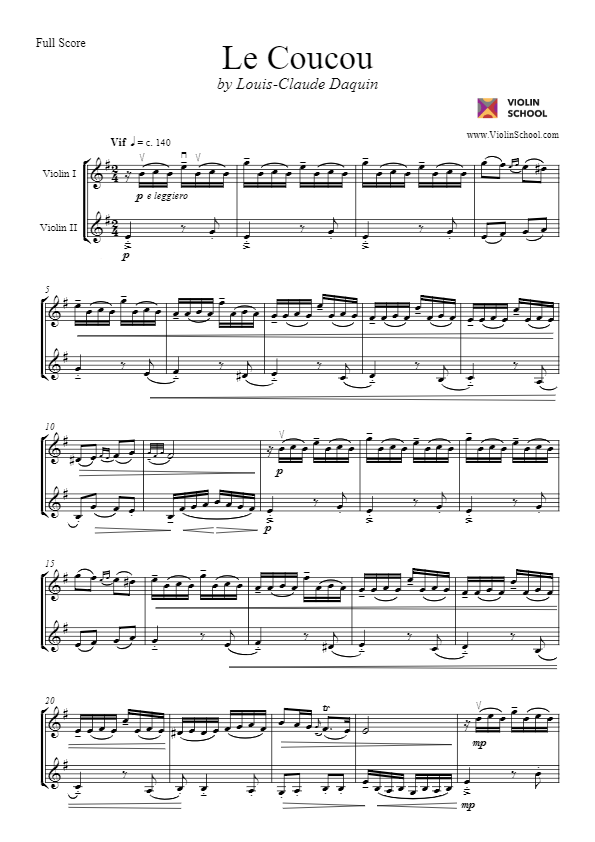
1st Position G Minor Arpeggio exercises featuring different note patterns, rhythms, bowings and articulations.
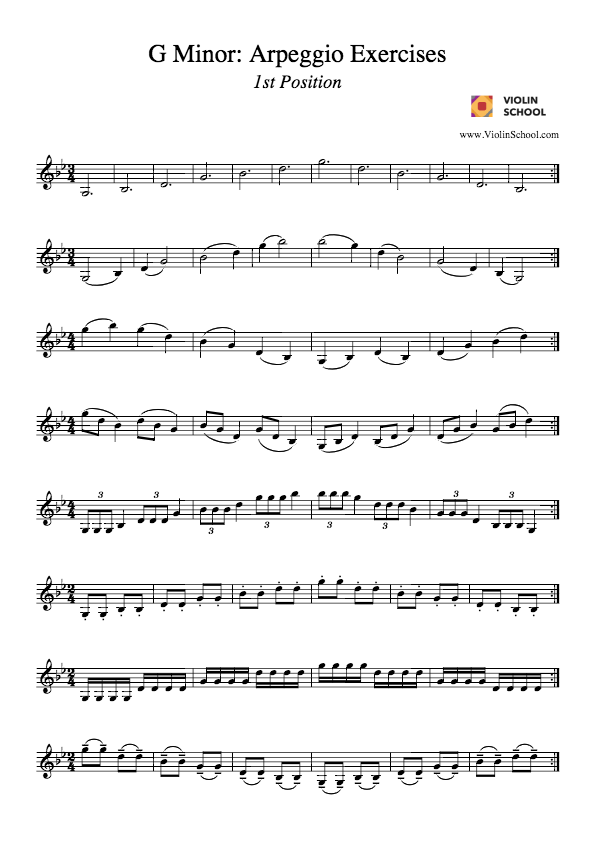
The sublime, sweeping main theme from Tchaikovsky’s much loved ballet, telling the story of Odette, a princess turned into a swan by an evil sorcerer's curse!
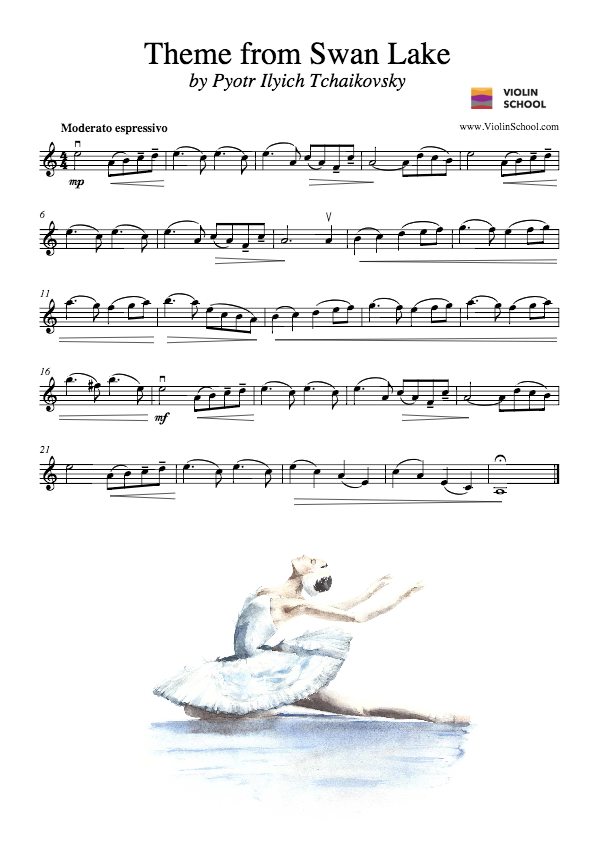
Let's practice clapping some rhythms together!
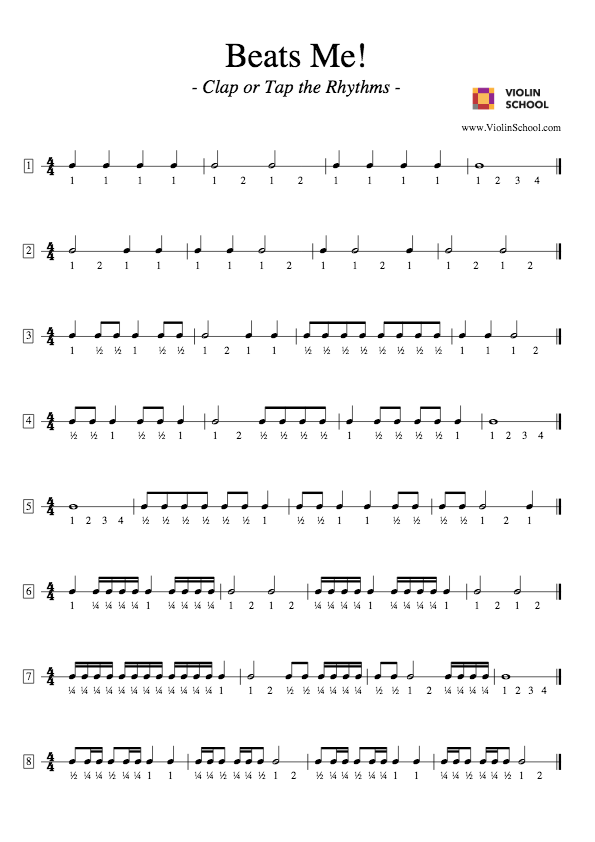
Beats Me!
What is music? It’s a surprisingly difficult question to answer! … hard to come up with a satisfactory definition. Here’s our best effort, taken from the ViolinSchool Glossary:
The vast vast majority of music will contain varieties of these three elements: Pitch, Rhythm, and Sound (timbre). And so, when you are practising the violin, you need to be super-duper-hyper aware of all three, developing and honing, developing and honing, then honing some more!
In Beats Me!, we’re going to look at the fundamental units of rhythm, the units that you’ll find in pretty much every piece you will ever play.
So, what is rhythm?! Again, let’s consult the ViolinSchool Glossary:
Sounds good. But, what is pulse? How is it different from rhythm?
Once we’ve established the pulse, felt the beat, then rhythm can take place within and around it. It’s such a natural, human thing (and a parrot thing, too, it would seem … keen “headbangers” that they are!). When we ‘sense’ the pulse, or ‘feel’ the beat, it makes us react kinaesthetically: we tap our feet, we clap our hands, we nod our heads, we dance! The pulse of music can be super super fast, or super super slow, and everything in between … we call this the ‘tempo’:
The basic units of rhythm are as follows:
American Terms --- Whole Note (4 beats); Half Note (2 beats); Quarter Note (1 beat); Eighth Note (½ a beat); & Sixteenth Note (¼ of a beat)
British Terms --- Semibreve (4 beats); Minim (2 beats); Crotchet (1 beat); Quaver (½ a beat); & Semiquaver (¼ of a beat)
Now we’re clear on the definitions, let’s try clapping or tapping the rhythms in Beats Me!
Make sure the pulse is really solid and consistent. Start with a slow tempo, and then try it at a faster tempo, and then at an even faster tempo, etc., etc. You can also ‘speak’ the rhythms while you clap/tap, saying out loud “1-2-3-4” … “1-2” … “1” … “half” … “quarter”.
A great way to strengthen your sense of pulse (and to check you are getting all the rhythms right!) is to use a metronome … Glossary-time! …
Have fun!
Time to cast some spells! Your bow becomes a magic wand to conjure up some wondrous sounds in this bedazzling little open string piece. Abracadabra!!
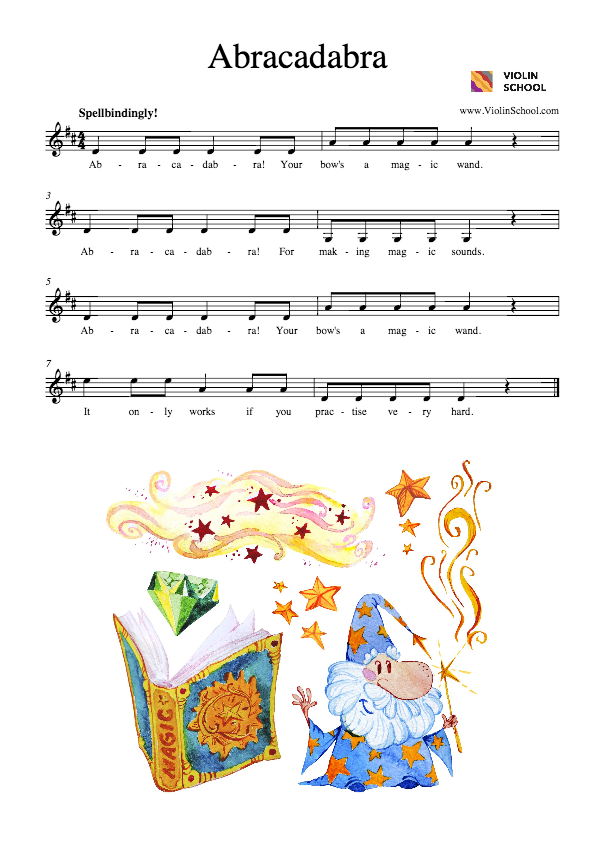
Arpeggio-based note patterns, rhythms, bowings, techniques, and articulation exercises in 1st position G major.
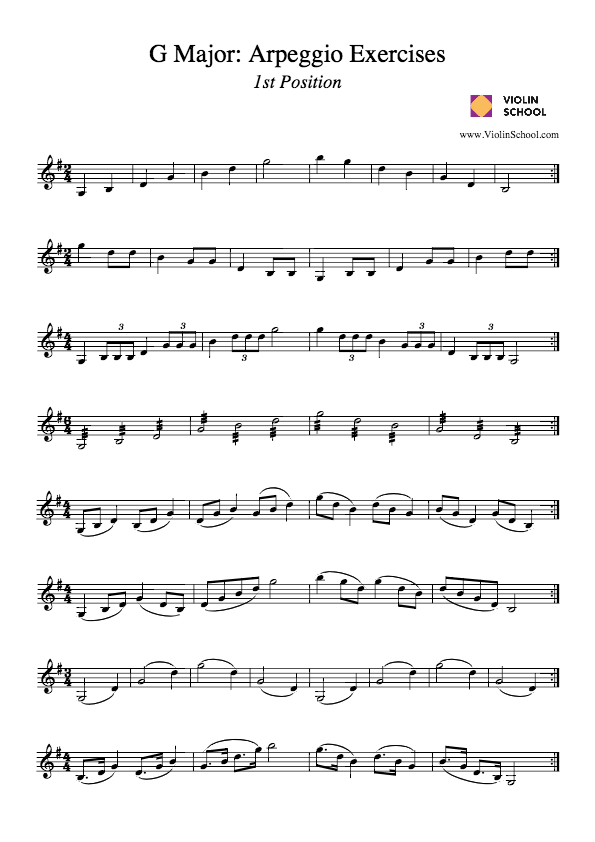
From a galaxy far, far away … comes this fantastic piece for practising landing the 4th finger of the left hand with pinpoint accuracy. Go 4th and conquer!
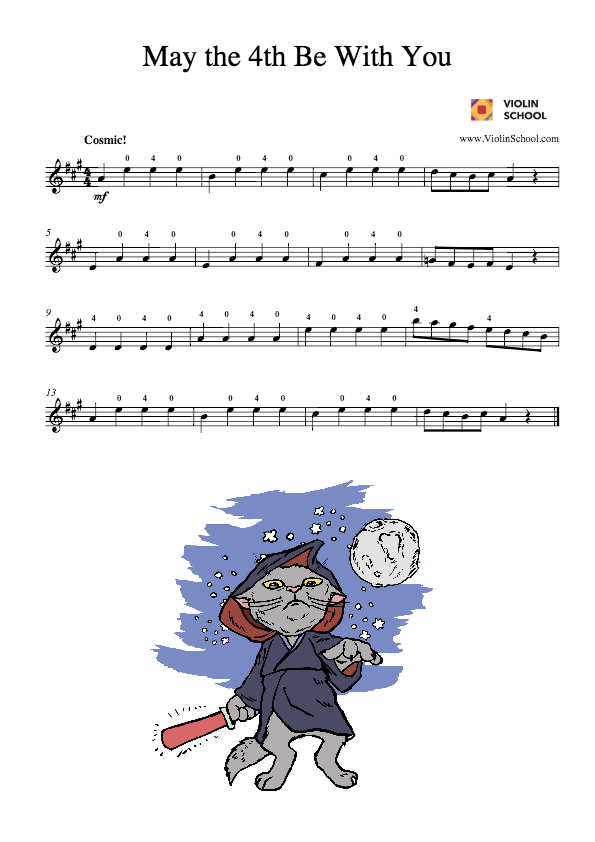
Meet George, a giant tortoise who really really loves ice cream! Find out what his favourite flavours are in this fun little piece for open strings!
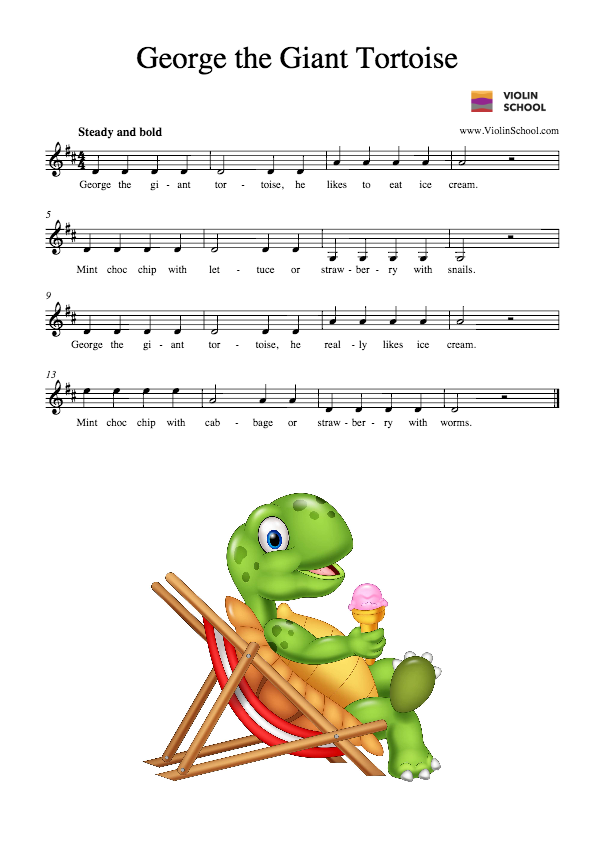
These four pieces of wood, usually carved from ebony, are used to hold the strings in the pegbox of the violin. They're shaped so that they're easy (ish!) to turn.
We use the pegs to tune the violin by turning them to tighten the string – which raises the pitch - or to loosen the string – which lowers the pitch.
Turning the peg even just a small amount will make quite a bit of change to the pitch of the string! So we need to be careful not to turn the pegs too far above the desired pitches of G, D, A, & E!
Otherwise, there'll be too much tension in the string, and it will snap!
A delightful, but fiendishly tricky, piece with lots of double stops! Keep your cards close to your chest, or in this case, your fingers close to the fingerboard!
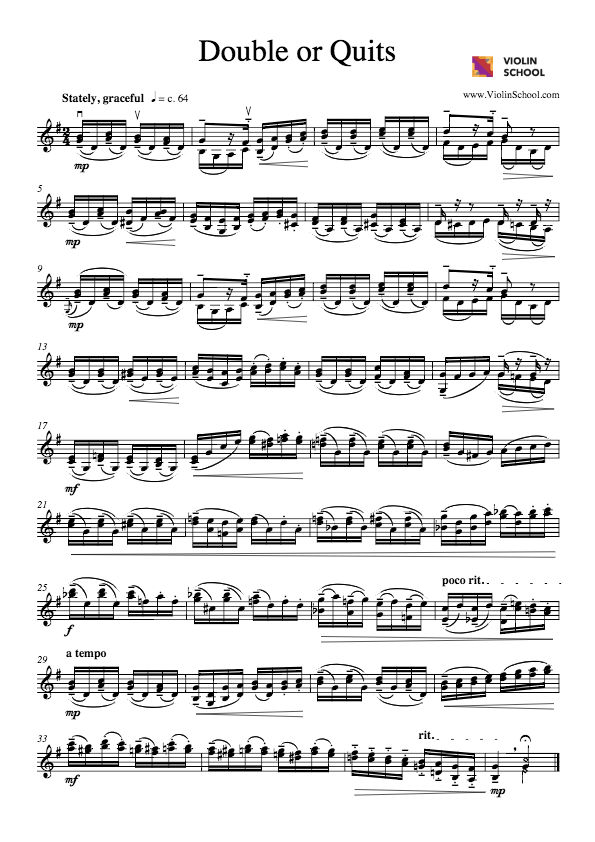
The scroll is the decoratively carved ‘head’ of the violin - it's the fancy twirly bit at the top!
The scroll is typically shaped as a rolled-up spiral, known as a volute. Sometimes human or animal heads!
The scroll is the ultimate test of a luthier's craftsmanship... it's a chance to show off their skill and artistry!
In this high-octane, high-stakes game of cat-and-mouse, who will come out on top? Will the pussy cat be outsmarted by the tricksy off-beats of the mouse?!
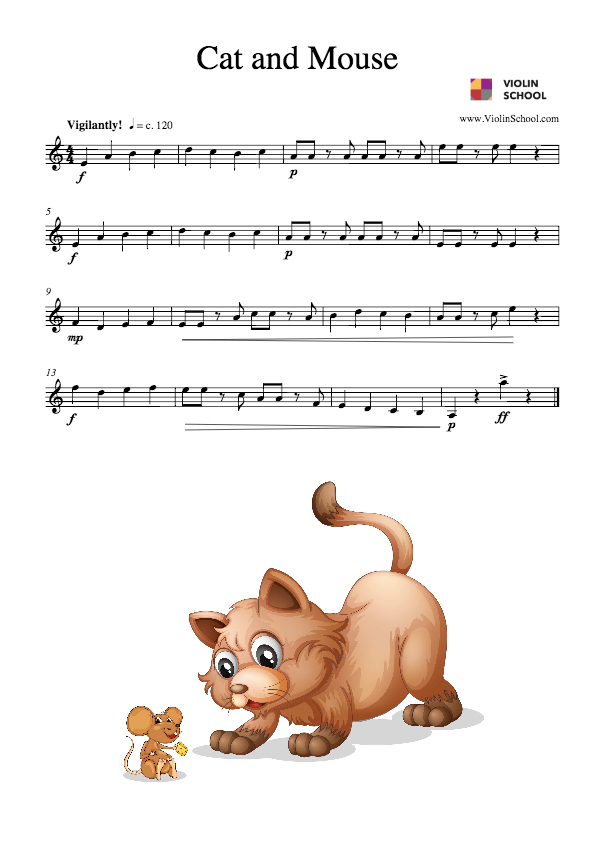
This ornately carved, upright, unvarnished wooden device holds the violin’s strings in place. It sits on top of the instrument, between the little cross-bars of the f-holes, supported above the soundboard.
The bridge isn’t glued or fixed to the instrument … it’s kept in place by the pressure of the strings. So, if you loosen all the strings, then the bridge will fall off! The bridge should be pretty much perpendicular to the surface of the violin; it shouldn’t lean too far forward, or too far back … that is an accident waiting to happen!
The bridge transfers the vibrations of the strings into the body of the violin for amplification, out into the surrounding air, and into the ears, and souls, of your listeners! Without it, the strings would only produce a faint, somewhat pathetic, sound!
The top of the bridge is slightly curved, so that we can play on one string at a time. Small adjustments to its position can have a significant effect on the violin’s sound.
This rousing, noble tune appears in the final movement of Johannes Brahms's landmark 1st Symphony, written in 1876. Play it fast and with vigour!
Click here to download Brahms - Symphony No.1 from the ViolinSchool Library!
The water is wide, I cannot get over / Neither have I wings to fly / Give me a boat that can carry two / And both shall row, my love and I …
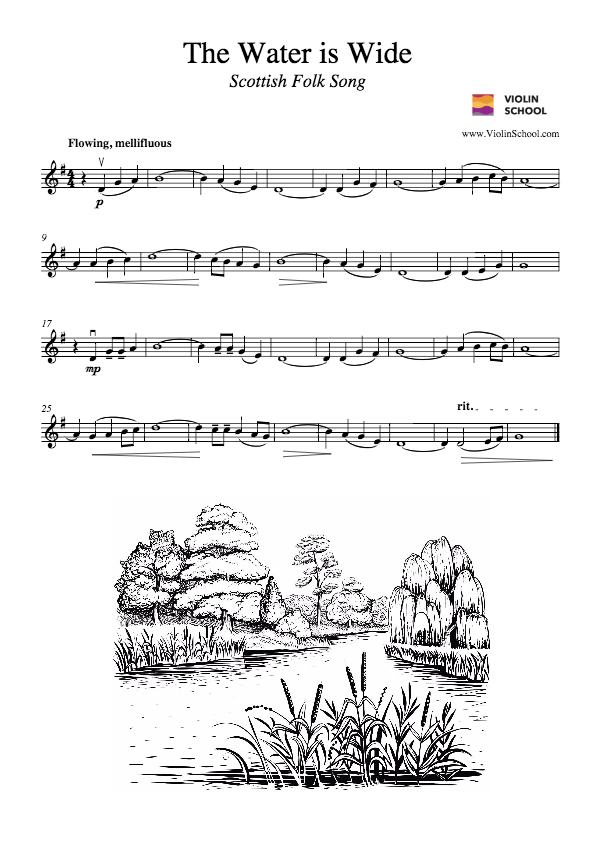
An excellent way to practise G major on the G string, D major on the D string, A major on the A string, and E major on the E string! Always have a spare key!
Click here to download Spare Keys from the ViolinSchool Library!
Who wouldn’t want a little lamb following them around everywhere they went?!! Enjoy this lovely, lambent nursery rhyme, here in the key of D major.
Click here to download Mary Had a Little Lamb from the ViolinSchool Library!
I've been teaching a lot of One to One lessons recently (I added an extra day to my London class - get in touch here if you'd like to book a lesson with me or David!).
It's got me thinking about the nature of what a violin lesson actually is!
A lot of people come to a violin lesson expecting a teacher to teach them how to play the violin! Teacher tells learner what to do, learner does it, everyone's happy.

But is that all there is to a violin lesson?
Of course, imparting information is a huge part of a teacher’s role.
But, rather than simply expecting knowledge (e.g. what to do, how to do it) to be acquired at a violin lesson, what would happen if that knowledge was acquired before a lesson, and then the lesson itself becomes focused on the application of that knowledge?
**
I'd draw an analogy here between teaching and coaching. For example, whenever I have a big concert or a recording session, I go and book a violin coaching session at ViolinSchool with David (yes, I study at ViolinSchool too!).
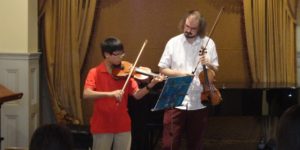
David and I spend large amounts of time every single week talking about violin playing, and so information itself is very rarely the main focus in a lesson environment.
But playing to him is always, without exception, a revelatory experience. Why?
The best way I can think to describe it is to have someone hold up an all-seeing mirror to you. The mirror not only reflects back to you what you're doing (valuable as that is), but it also gives you a new perspective on what you're doing.
You become aware of the potential you have to realise what you already know or can do. This opens up more possibilities for you to use your existing skills much more effectively.
The ideas in a coaching session could be musical, technical, performance-related, philosophical, or even something else entirely ... but the hallmark of any great coaching session is that you come away feeling like you have new insights into how you might use your existing abilities in exciting new ways.
This kind of sophisticated and multi-faceted experience can only really come from a strong personal relationship between a player and a coach (and it's no coincidence that this kind of relationship is considered essential in the world of sports).
If you're just acquiring knowledge then you're learning about the violin. But if you're exploring how to apply that knowledge, then you're learning about yourself!
So although there's precious little difference in booking a ‘lesson’ or a ‘coaching session’ - from an administrative perspective it's one and the same thing! - the actual nature of the time spent together - teacher and learner or coach and learner - is very different indeed!
Here’s the gorgeous, tender melody from the 3rd movement of Scheherazade by Rimsky-Korsakov, his epic symphonic suite based on One Thousand and One Nights.
Click here to download The Young Prince and Princess from the ViolinSchool Library!
